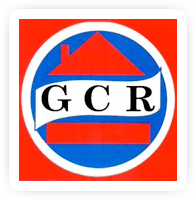Conventional Mortgage
This is the most common mortgage, although the new alternative plans are threating its survival. Here the buyer obtains a 25 or 30-year loan from a lending institution at the prevailing rate. Be sure you can refinance the mortgage if interest rates go down.
F. H. A. and V.A. backed plans
The Federal Housing Administration and the Veterans Administration do not grant mortgages. They offer a Federal guarantee that makes mortgages more attractive to lenders since payment will be made by these two agencies in the event of default by the mortgage. Both require low or no down payments and an interest rate lower than the prevailing rate.
Adjustable Rate Mortgage (ARM)
These are long-term 30-year loans with rate adjustments semi-annually, annually, or every 30 months, three years, or five years to reflect current interest rates. A balanced ARM is generally offered b Federal chartered banks and is the safest and most attractive mortgage. Both rate changes and payments changes are limited to protect borrowers against the risk of sudden substantial increase in monthly payments.
Graduated Payment Mortgage (GPM)
Those who cannot afford high payments in the beginning, yet expect their income to increase use these. Initially payments are low and monthly mortgage payments continue to rise each year until the fifth to tenth year of the mortgage, when payment stabilizes and remains the same for the balance of the loan.
Buy-Downs
Builders and sellers are offering below market creative financing through a lending institution. The seller buys down the rate for a period of time, ranging from 30 months to the life of the loan by paying the bank a fee, which generally makes up the difference between what the lower rate would net and the present value of the interest payments the bank would otherwise have changed. This results in lower monthly payments for the buyer and increases his chance to qualify for the loan.
Assumable First Mortgage Loans
Often a seller’s first mortgage is assumable by the purchaser without the lenders consent. Most of these loans were written five years ago when rates were 8 ½ percent or lower. This mortgage can be a good deal if the buyer has enough cash to convert the difference between the mortgage and the purchaser price or if the rate on second financing its attractive. The buyer can also save a mortgage tax of as much as 1 ¼ percent by assuming an existing mortgage.
Balloon Mortgage
This mortgage is offered for a three or five year period. After the short term loan expires, the lender may either renew the loan at current rates or ask that the loan be paid in full.
Roll-Over Mortgage
This mortgage is offered for a three to five year period backed by a banks commitment to extend the loan at whatever rate is prevailing at maturity.
Graduated Equity Mortgage
Monthly payments are fixed for the first year as if for a 25-30 year term. After the first year the interest rates increase with additional rates going toward the principal. Home equity builds early and the loan is paid off in approximately 13 years.
Purchase Money Loan (PMs)
The seller extends these loans to the purchaser, generally at below market rates on an interest only basis. There are different variations to this plan. Sometimes sellers will set terms of five years or so, until the buyer can obtain permanent financing.
Zero Rate Loans
Usually offered by builders. Buyer pays only the principal and no interest because builders sell the mortgage to a bank at a discount. Since no interest is charged, the sales price of the home is increased accordingly.
Equity Sharing Or Shared Appreciation Mortgage (SAM)
With this loan, lenders offer homebuyers a one-third cut in interest rates for a one-third share in the profit from the house when it is sold. SAM is available only in certain areas. If you don’t sell your home before ten years have elapsed, the lender will send over an appraiser to calculate the market price. Then the borrower must pay the lender its share of the appreciation, less the cost of any improvements.
